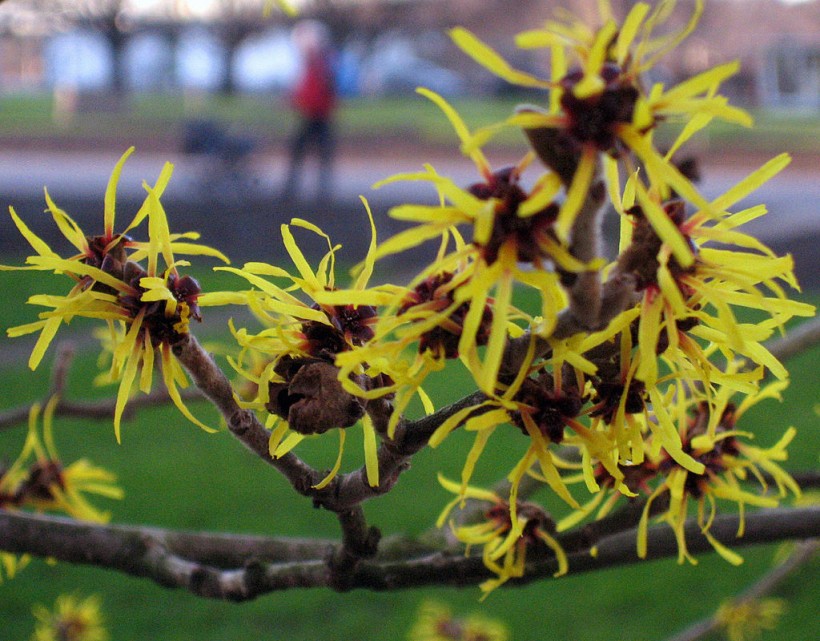The seemingly delicate witch hazel plant found in forests may soon take an unexpected role as a source of inspiration for robotics. Thanks to its impressive seed-shooting capabilities.
This intriguing aspect of nature's design has captured the attention of Duke University graduate student Justin Jorge, who views the witch hazel plant's seed dispersal mechanism as a form of botanical artillery.

Erfurt, GERMANY: A blooming witch-hazel (Hamamelis) is seen 15 January 2007 at the grounds of the Erfurt Horticultural Show. Unseasonally warm weather affects wide parts of Germany.
Witch Hazel Plant: Rapid Seed-Shooting in Action
When the witch hazel plant's woody seed capsules ripen, they burst open with significant force, akin to a howitzer firing. Pressure accumulates within the capsule, propelling the seeds at remarkable speeds of up to 30 feet per second in mere half-millisecond intervals.
According to the study, this rapid process is nearly invisible to the naked eye. To capture the rapid seed-shooting in action, a team led by Sheila Patek, a senior author, utilized a high-speed video camera capable of recording at 100,000 frames per second.
The research involved examining witch hazel fruits from three different species found in Duke Gardens or Duke Forest. These species exhibited a consistent launching speed regardless of seed size.
The secret behind the witch hazel's explosive seed dispersal lies in its spring-loaded mechanism. As the fruit capsule dries and contracts, similar to warping wood, the walls of the woody capsule pressurize, ultimately propelling the seed outwards.
The researchers discovered that this mechanism is consistent across the three studied species. Before ejection, the fruit capsule contracts, building potential energy within the spring-like capsule. The accumulated potential energy triggers the rapid propulsion as the seed is released.
Interestingly, the species with larger seeds sported bigger capsules capable of storing more elastic energy, a principle analogous to keeping more energy in the spring to achieve greater force.
Jorge, the graduate student behind this study, is now focusing on comprehending the forces acting upon the witch hazel seeds during their flight and assessing their maximum travel distance.
Read Also: Apptronik Unveils Apollo: New Humanoid Robot Is a Rival to Tesla's Optimus Bot
Beyond Botanical Curiosity
The implications of this research extend beyond botanical curiosity. Insights gained from nature's mechanics could contribute to improved robot designs.
Jorge emphasized the peculiar springs found in these plants as a potential wellspring of inspiration for synthetic springs in robotic systems. He noted the promise of utilizing intricate biological shapes, which stand in contrast to conventional mechanical designs like rubber bands or coils.
"Perhaps there are some benefits to these shapes that can be used to improve the design of synthetic springs, such as those used in small jumping robots, but first, we need to understand how these biological springs work," Jorge explained.
The study received support from the National Science Foundation Division of Integrative Organismal Biology (2019323), the US Army Research Laboratory, and the US Army Research Office. The findings were published in the Journal of the Royal Society Interface.
Related Article: These Robots Are Being Taught to Open Dishwashers, Doors With 'Minimal Manual Guidance' - How?










